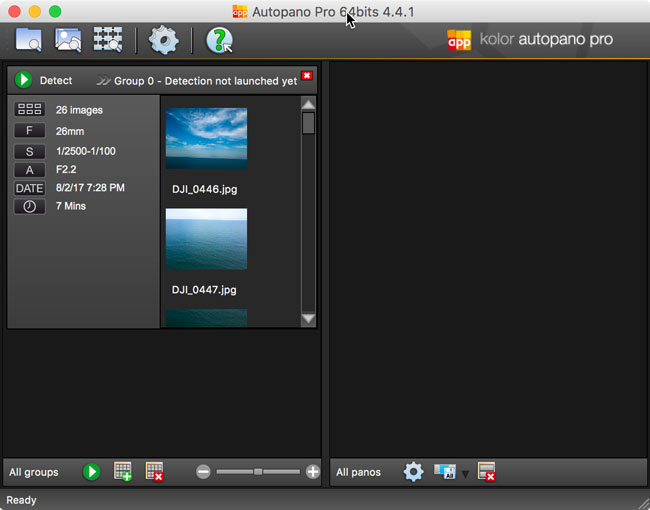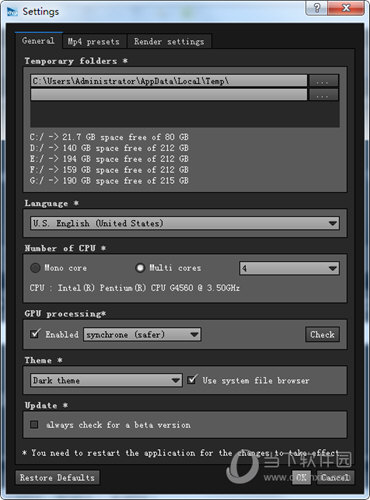

The camera uses advanced imaging technology to capture high-quality 3D scans of the environment, allowing users to virtually walk through and explore the space as if they were there in person. What Is a Matterport Camera?Ī Matterport camera is a 3D camera for creating immersive virtual tours of real-world spaces.
#Autopano video pro jpeg sequence as source how to#
So, in this post, we will show you how to easily download 360 images from a Matterport camera.īut first, let’s talk about what is a Matterport camera. Therefore, many Matterport camera owners seek less expensive virtual tour editing services.īut to use these less expensive editing services you’ll first need to know how to download your images from the Matterport camera. Matterport cameras take 360-degree photos that are used to create virtual tours of properties for real estate marketing and sales. A Matterport camera is expensive – and so are its virtual tour editing services. Let PhotoUp Edit Your Matterport Images.Downloading 360-Degree Images From a Matterport Camera- 7 Easy Steps.Overwhelmed and confused by some of the terminology and concepts that surround video encoding? Don’t worry, we’ve got you covered! In our Video Encoding Basics series, we’ll explore the fundamentals of video encoding with a high level explanation of key concepts.

We’ll guide you through the basics of what you should know, dispel common myths along the way and predict future trends. What is a Video Codec and What Does it Do? So let’s get the ball rolling with codecs. The term codec is actually a portmanteau of the words en CO ding (coding) and DEC oding and describes a process for compressing and decompressing data as files or a real-time stream. For broadcast engineers, a codec usually refers to the compression standard used by a video encoder, decoder or transcoder. When it comes to transporting and storing uncompressed raw video, this can mean a colossal amount of data to send over any connection. Given the constant struggle for bandwidth efficiency, compression significantly reduces the bandwidth required making it possible for real-time video streams or files to be easily transmitted across constrained networks. Video compression algorithms such as H.264/AVC or H.265/HEVC reduce the raw content data by as much as 1,000 times.Įncoding HD video for IP streaming Video Compression 101Ĭompression techniques are used extensively across all elements of today’s computer and networking architectures for efficient storage or transport. The goal of a video codec is to intelligently reduce the size of video content, ie the total number of bits needed to represent a given image or sequence, while simultaneously maintaining picture quality. Video compression is commonly performed by a codec’s algorithm or formula for determining the best way to compress the data. There are several different codecs and methods of compression, but the basic concepts remain the same. Most codecs use “lossy” compression methods which, at a high level, means that when a video is compressed, some redundant spatial and temporal information is reduced. “Lossless” compression is sometimes used when the goal is to reduce file and stream sizes by only a slight amount in order to keep picture quality identical to the original source. Spatial reduction or intra-frame compression physically reduces the size of the data by selectively removing parts of the original data in a video frame. Temporal reduction or inter-frame compression significantly decreases the amount of data needed to store a video frame by encoding only the pixels that change between consecutive frames in a sequence.

By grouping multiple frames within a group of pictures or GOP, inter-frame compression is the most common approach for video as it can significantly reduce file and stream sizes. Within the context of live video streaming, a video bitrate is the number of bits that are processed within a unit of time and is commonly measured in bits per second. In general, a higher bitrate will accommodate higher image quality in the video output. When compressed to the same bit rate, video in a newer codec such as HEVC, for example, will be significantly higher quality than an older codec such as H.264. Conversely, HEVC can deliver the same video quality at a lower bitrate than H.264. MPEG-2, is the precursor to H.264 and HEVC, has been around since the 1990s and was responsible for pioneering video encoding at the time with digital television and DVDs.


 0 kommentar(er)
0 kommentar(er)
